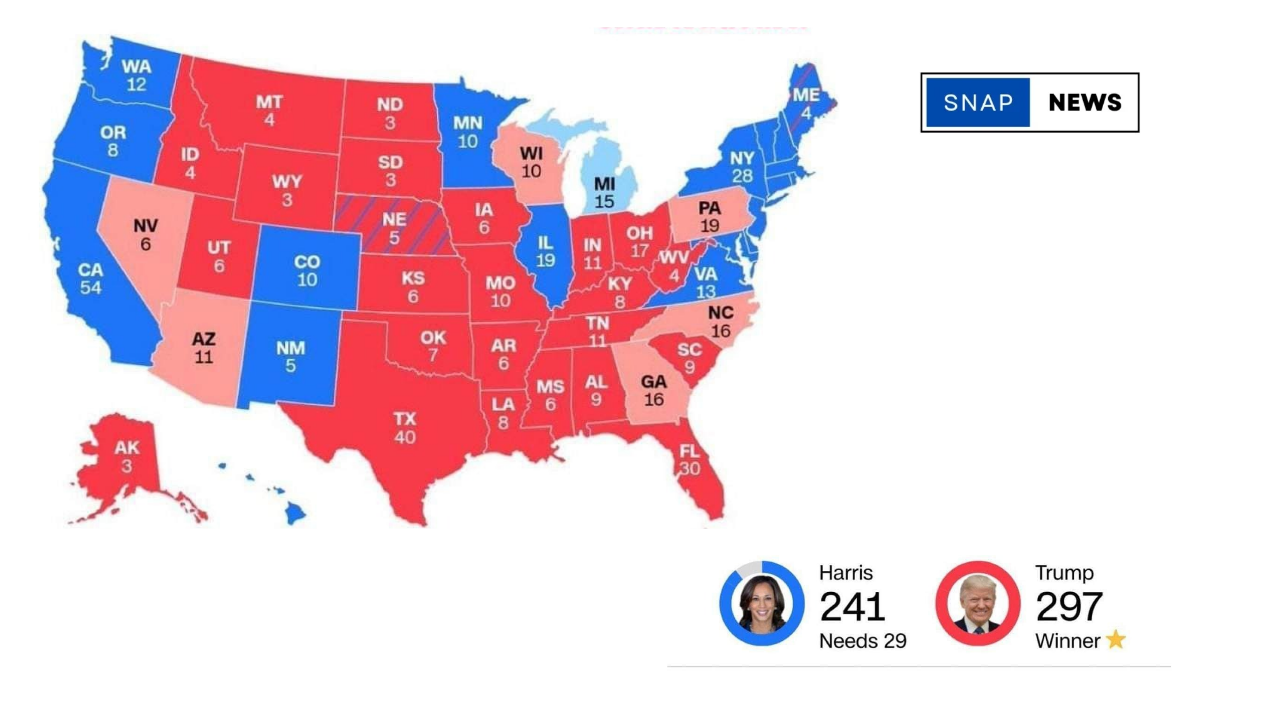As the 2024 United States presidential and Senate elections unfold, the nation stands at a critical crossroads in its democratic journey. This election cycle has captured the world’s attention, with a historic presidential contest and fiercely competitive Senate races across key battleground states. The 2024 United States Presidential and Senate Elections are set to impact the country’s political landscape for years to come, influencing policy directions on economic, social, and global issues.

Presidential Election
The presidential election in 2024 is shaping up to be a highly contested race between Kamala Harris, the current Vice President, and former President Donald Trump. Polls are painting a picture of a tight race, with Harris and Trump running neck and neck in key battleground states like Pennsylvania, Michigan, and Georgia. Political analysts note that the outcome may hinge on voter turnout in these states and among crucial demographics, including suburban voters, young people, and Latino communities.
Key Issues and Campaigns
In the 2024 presidential election, the candidates have laid out contrasting visions. Kamala Harris’s campaign emphasizes progressive policies on healthcare, climate change, and social justice. She is campaigning on the achievements of the Biden administration, highlighting infrastructure investments, healthcare reforms, and climate initiatives. On the other hand, Donald Trump’s campaign focuses on economic revitalization, tax cuts, and a strong “America First” approach to foreign policy. Trump aims to galvanize his base by championing limited government intervention, energy independence, and security at the U.S.-Mexico border.
Impact of Swing States
Several swing states, including Pennsylvania, Wisconsin, and North Carolina, are expected to play a crucial role in deciding the next president. These states historically swing between Republican and Democratic candidates, often determining the final outcome. With issues like inflation, public safety, and immigration concerns topping the voters’ minds, both campaigns are deploying significant resources and attention in these regions. Each campaign’s strategy includes high-profile rallies, door-to-door canvassing, and massive advertising efforts to sway undecided voters.
Senate Elections
Simultaneously, the 2024 United States Senate elections will decide the fate of 34 out of 100 seats, with Democrats defending 23 seats and Republicans defending 11. The balance of power in the Senate is essential, as it impacts the legislative process and the ability of the next president to pass key agenda items. Senate races in states like Arizona, Michigan, Pennsylvania, and Nevada have become focal points, with substantial financial backing and grassroots mobilization from both parties.
Key Senate Races
- Arizona: Arizona’s Senate seat is open due to the retirement of Senator Kyrsten Sinema, and both Democrats and Republicans view it as a major battleground. A three-way race is anticipated, with both major parties fielding strong candidates and the potential for an independent candidate to enter the fray.
- Michigan: Michigan’s Senate seat is also up for grabs as Senator Debbie Stabenow retires. The state has traditionally leaned Democratic in recent presidential cycles, but Republicans see an opportunity to flip the seat, especially if they can appeal to moderate and swing voters.
- Pennsylvania: The Keystone State’s Senate seat is in play as a top-tier contest. Given Pennsylvania’s status as a critical battleground in presidential races, the Senate race here is highly consequential. Both parties are putting significant resources into securing a victory.
- Nevada and Ohio: In Nevada, a Democratic incumbent faces a tough re-election fight, while in Ohio, a Republican seat is vulnerable. These states are also expected to be fiercely contested, with campaign issues centering on the economy, healthcare, and job creation.
Political Forecasts and Analysis
Analysts predict a competitive Senate election cycle, with several races too close to call. The Cook Partisan Voting Index, a measure used to rate how a state leans politically, suggests that states like Nevada, Ohio, and Colorado could swing either way. The shifting demographics in some of these regions add an unpredictable element, as suburban and independent voters play an increasingly decisive role. The outcome of the Senate races will not only influence the legislative priorities of the next Congress but also affect key areas like judicial appointments and federal spending.
Influence of Voter Turnout
Voter turnout in the 2024 United States Presidential and Senate Elections will be a major factor, particularly among young voters, women, and minority groups. Both parties are making substantial efforts to register new voters and motivate those who have traditionally sat out midterm or general elections. Turnout in swing states could be the ultimate determinant in not only the presidential race but also close Senate races, where just a few thousand votes can make the difference.
Role of Campaign Finance
Campaign financing plays a significant role in U.S. elections, and 2024 is no exception. With control of both the White House and the Senate at stake, political action committees (PACs) and super PACs are pouring millions into advertisements, digital campaigns, and grassroots efforts to influence public opinion. Transparency in campaign funding remains a hot topic, as candidates from both sides seek to gain an edge through substantial financial backing.
Conclusion
The 2024 United States presidential and Senate elections promise to be a turning point in the country’s political history. With significant issues at stake, voters are closely watching the candidates’ positions, campaign promises, and potential impacts on their daily lives. This election cycle could redefine American politics, influencing policies on healthcare, economic recovery, foreign relations, and more. As November approaches, the country—and the world—will be watching closely to see who emerges victorious and what that outcome means for the future of the United States.











